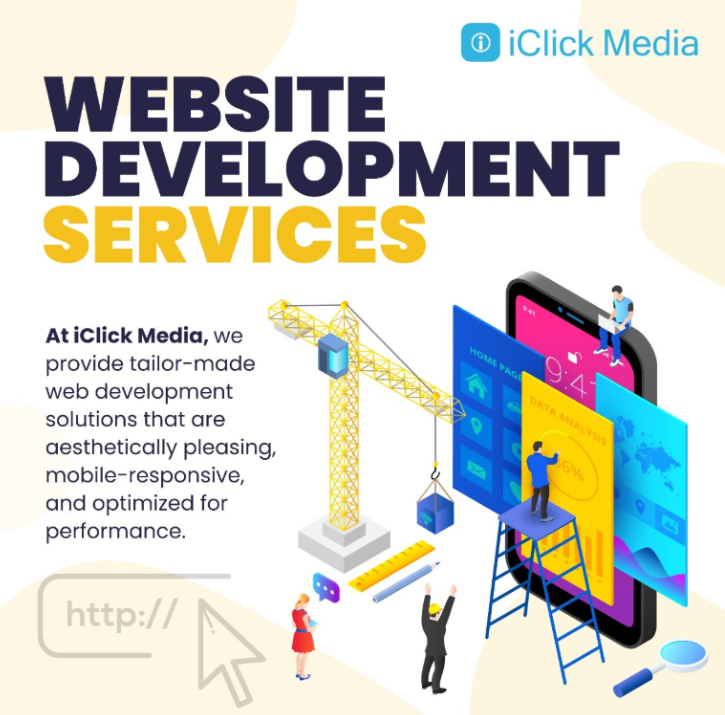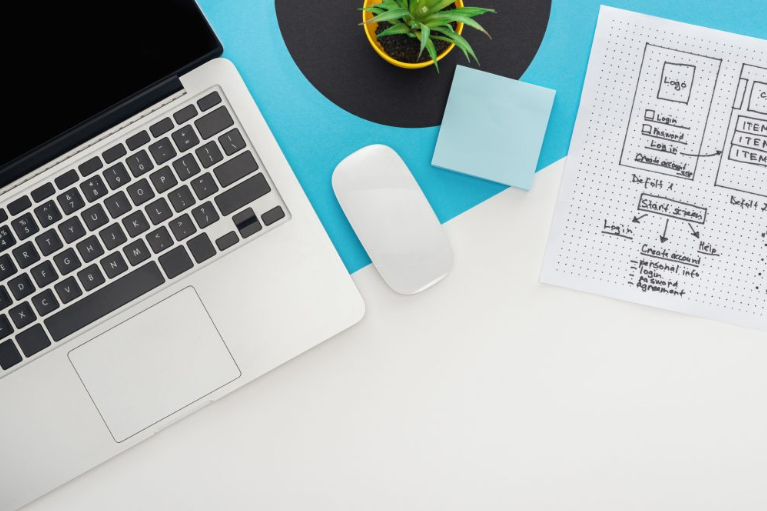These days, everyone and their grandma has a website. Heck, your neighborhood cat café probably has one. So, just slapping together a few pages and calling it a day? Yeah, that’s not gonna cut it anymore. With a zillion sites all fighting for eyeballs, the one thing that sets you apart is how your website looks and feels. Whether you’re a fresh-faced startup in Singapore or some big-shot brand just trying to look less ancient online, web design is the secret sauce. It shapes how people see you, whether they stick around, and even if Google gives you the time of day. Nail the design, and suddenly you look legit, people trust you, and who knows? Maybe they’ll even buy something. But before I go off on a tangent, let’s rewind a bit and break down the basics: What’s web design anyway, and why should you care?
So, What’s Web Design

Web design is more than just picking a color scheme and hoping for the best. It’s about plotting out how your site should look, how people should move through it, and making sure it doesn’t look like it was built in 2003. You want something easy on the eyes but also stupid-simple to use. Nobody’s got time for a maze. Sure, your website needs to work, buttons should click, links shouldn’t be dead, the usual. But awesome design? That’s when people can zip around, find what they want, and maybe even enjoy themselves in the process.
The whole thing’s like a weird mashup between tech geekery and art class. The best web designers? They’re half-coder, half-artist, all magician. Especially in Singapore Website Design, people aren’t just looking for pretty pictures anymore. They want websites that do something: pull you in, get you to come back, and score some brownie points with Google’s algorithm. That’s why web design now is way more than basic code and boring layouts; it’s interactive, it’s responsive, and it’s always thinking about what you want, even before you do.
What Do Web Designers Do
Web designers are the magicians behind what you see and feel when you land on a website and see a great website design. They take wild ideas and turn them into something you can click, scroll, and (sometimes) fall in love with. We’re talking about picking out color palettes that don’t make your eyes bleed, choosing fonts that don’t scream 1998, adding on some killer images, and throwing in interactive bits that make you go, “Dang, that’s cool.”
But it’s not just about making things pretty. They have to care about how the site works, too. Like, is it easy to use, or do you get lost and want to throw your laptop out the window? That’s the whole UI (user interface) and UX (user experience) thing, how it looks and how it feels.
Most of them live inside Figma, Adobe XD, Canva, or whatever is trendy this month. And yeah, they work with the code wizards (aka programmers) to bring their mockups to life. Whether they’re whipping up a homepage that makes you want to stick around or a landing page that begs you to buy something, web designers are the secret sauce behind a brand’s digital vibe.
Why Bother With Good Web Design

Your website is your 24/7 hype man. It’s always out there, working overtime, schmoozing visitors, and maybe even convincing them to buy your stuff while you’re asleep. Especially in places like Singapore, where everyone and their aunt has a website, you gotta stand out or get lost in the noise. Here’s the real tea:
1. Killer First Impressions
You get, like, 0.02 seconds before someone judges your site. If it looks like it was built during the dial-up era, they’re out. A crisp, modern, and speedy page says, “Hey, we know what we’re doing. Trust us.”
2. Better Google Love
Websites aren’t just for humans. Google’s bots are crawling around, too. If your site works on phones, is easy to get around, and doesn’t make Google’s robot brain hurt, you’ll show up higher in search results. No one looks at page two, let’s be real.
3. More Clicks, More Cash
If people can find stuff on your site, understand what you’re selling, and don’t have to solve a puzzle just to check out, they’ll stick around longer. Maybe they’ll even buy something.
4. Brand Vibes on Point
Good designers make sure your website actually looks like your brand. Colors, fonts, weird little icons, everything lines up. That way, people remember you instead of thinking, “Who the heck was that again?”
5. People Stay
Nobody hangs around on an ugly, slow site. If yours loads fast, looks sharp, and isn’t a nightmare to use, folks won’t bail immediately. Lower bounce rates = more chances to win them over. Simple as that.
What Makes a Website Pop
Alright, let’s get real about what makes a website pop. It’s not rocket science, but it’s not just adding on some colors and buttons on a page either. Honestly, it’s two buckets: how it looks, and how it works. Let’s dig in.
Lookin’ Good (Visual Stuff):
Layout: Whether it’s all neat and griddy or a little chaotic (in a cool way), just make sure it leads the eyeballs where you want them to go.
Fonts: Pick ones that don’t make people’s eyes bleed. Match the vibe of your brand. It’s not Comic Sans.
Colors: Stick to a palette that doesn’t scream “1997 Geocities.” Colors should look good together and make people feel stuff (that’s the “psychology” bit, but let’s not get pretentious).
Images & Videos: Add on some visuals that tell your story. No random stock models laughing at salad, please.
Icons & Logos: Simple, obvious, not confusing. If they have to guess what the icon is, it’s a fail.
Work and Functional Stuff
- Navigation: Don’t make people search for the menu like it’s buried treasure. Just give them a header or something sticky.
- Mobile Ready: If your site freaks out on the phone, people are out. It’s 2025, come on.
- Speed: Ain’t nobody got time for slow pages. If it takes more than a second or two, they are clicking away.
- Accessibility: Everyone should be able to use your site. That means alt text, decent contrast, all that jazz.
- CTAs: Tell people what to do! Make your call-to-action buttons pop, not blend in with the wallpaper.
Bottom line: If your site looks good but works like garbage, or works fine but looks like a relic, nobody’s sticking around. Nail both, and you’re golden.
Web Design Tools
Alright, let’s talk web design tools, the real MVPs of any modern website build.
Here’s the rundown:
- WordPress? Absolute classic. If you want to manage a site without pulling your hair out, it’s a lifesaver.
- Figma and Adobe XD? These are where all the pretty wireframes and clickable prototypes get born. If you’re still sketching things on napkins, time to level up.
- Canva and Photoshop? That’s your visual playground. Memes, banners, whatever, these apps got your back for anything artsy.
- Wix and Squarespace? Drag-and-drop magic for people who would rather not touch code with a ten-foot pole.
- Shopify? The kingpin for online stores. Just plug in your products and boom, you’re open for business.
You don’t need to be a coding wizard anymore. These tools do all the heavy lifting, so you can launch a slick, professional-looking site while barely breaking a sweat. Fast, easy, and fun.
Now, zoom in on Singapore for a sec. Over 80% of people here are glued to their phones. So, if your website still looks like a hot mess on mobile, you’re invisible. Responsive web design isn’t some fancy bonus; it’s the bare minimum. Your site needs to flex and adapt, whether someone’s on a monster desktop or squinting at a phone screen on the MRT. Oh, and Google? They’re judging you. If your site isn’t mobile-friendly, don’t expect to rank anywhere useful. It’s 2024, folks. Get with the program.
Web Design vs Web Development
Alright, let’s not sugarcoat it, web design is the “does this thing look awesome and make sense?” part, while web development is the “how do we make this work without the whole thing exploding?” bit. Designers? They’re the artsy folks sketching out the mood, choosing colors, and making sure your buttons are in places people can find them. Developers, on the other hand, are the code-wranglers translating all those pretty pictures into something that loads when you hit refresh. If you’ve ever seen a gorgeous website that doesn’t glitch out when you click stuff, you can thank both camps for not fighting and working together (miracles do happen).
| Aspect | Web Design | Web Development |
| Focus | Visual aesthetics and user experience (UX/UI) | Functionality and technical implementation |
| Primary Tools | Figma, Adobe XD, Photoshop, Canva | HTML, CSS, JavaScript, PHP, React, etc. |
| Responsibilities | Layout, color schemes, typography, and visual elements | Building and maintaining website structure and code |
| User Interaction | Ensures the site is easy and enjoyable to use | Ensures features work properly and smoothly |
| Skills Needed | Creativity, design sense, and UX principles | Problem-solving, coding, logic |
| End Goal | Attractive and intuitive website layout | Fully functional and interactive website |
Wrapping Up
Web development is all about crafting something that connects with people and keeps them coming back. Singapore’s web scene? Man, it moves faster than a TikTok trend. So if you’re running a business, your site is not some dusty brochure; it’s your digital storefront that needs TLC, regular tweaks, and a laser focus on what real humans want.

Starting from zero or giving your old site a facelift, putting real effort (and yeah, cash) into smart design is gonna save you later. More eyeballs, better Google love, more folks trusting you, maybe even buying stuff. It’s not just about looking pretty. It’s about being clever, staying nimble, and making your website work for you.
 Tasselline | Latest Articles By Singaporeans, for Singaporeans Article Site for Singaporeans
Tasselline | Latest Articles By Singaporeans, for Singaporeans Article Site for Singaporeans